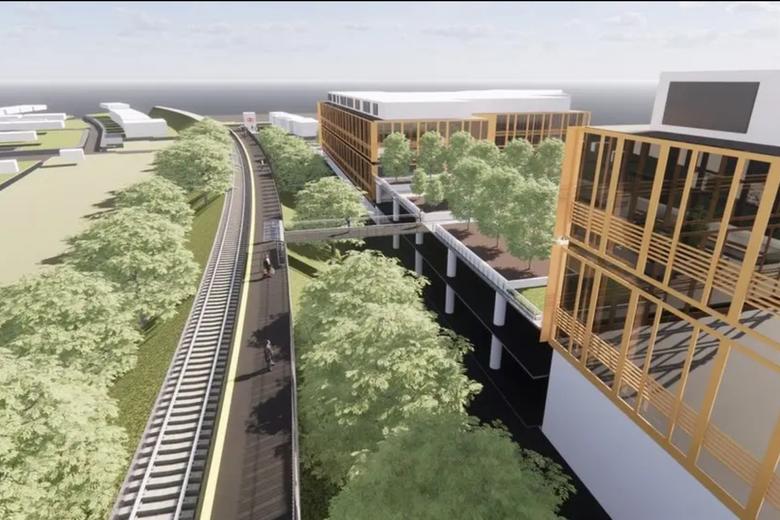SIR STEVEN COWLEY

SIR STEVEN COWLEY
A world leader in fusion discusses global energy futures, assumes the Chair of the Faraday Institution
Published: 12 November 2024
Author: Richard Lofthouse
Share this article
Professor Sir Steven Cowley (Corpus, 1978) is briefly in London from his Princeton, New Jersey base and rather generously makes time for lunch at the Royal Society.
A British theoretical physicist and international authority on nuclear fusion, Sir Steven originally won a scholarship to Corpus and later served as the college’s president, yet his meteor-like career pulled him back to the Princeton Plasma Physics Laboratory, which he has headed since 2018.
With a straight link to the US Department of Energy, that means that he is in a commanding position to comment on global energy futures.
He with vegetable wellington and me with shepherd’s pie, for the princely sum of a fiver each, I feel bound to start with the naivest journalistic question I can summon up: can we do fusion and how long will it take?
His reply is yes; and yes again. ‘We can do fusion. The problem is that it’s currently too expensive to be commercially viable.’ He then explains how various innovations will be required to make it available at a cost and scale that make it useful to society. Until then we have nuclear energy and nuclear is very important to a world of renewables.
Part-inflected now with a North American accent, Sir Steven’s voice and disposition imparts the sunny vibe of thinking and doing, big and positive.
‘Think about it,’ he says, ‘there were four central technologies that came out of World War Two in a partially finished state: nuclear fission, the jet engine, transistors from radar applications, and then nuclear fusion. Fusion is the only one not yet realised — but it will be.’
Nuclear fusion is the process by which two light atomic nuclei combine to form a single heavier one while releasing massive amounts of energy. Sir Steven’s original doctoral work concerned tokamak reactors, an abbreviation of a Russian term meaning ‘toroidal chamber with magnetic coils.’
Tokamaks emerged as a dominant fusion technology, the circular chamber in which a fission reaction can take place using very strong magnets. But controlling plasma turbulence associated with fusion reactions inside them has been a preoccupation, and indeed Sir Steven’s principal subject of research.
One of his great achievements has been to look more widely at plasmas found on a large scale throughout the Universe. He showed that these astrophysical plasmas also invariably exhibit turbulence, which amplifies and shapes their magnetic fields. Much of his work has involved modelling and computing this turbulence to the point where it has begun to feel familiar, even predictable – not unlike the multi-scale modelling of weather patterns and climate change now routinely performed by supercomputers at the world’s leading meteorological offices.
His certificate of election to the Royal Society in 2014 reads:
‘He discovered a key mechanism for the observed explosive eruptions from confined plasmas. Using analysis and computations Cowley and collaborators have shown that astrophysical plasmas are invariably turbulent. They have described the multi-scale spectra and structure of this turbulence and how it amplifies and shapes the magnetic field in the large scale plasmas of the universe.’
Back then, exactly one decade ago, it was a different world. Cowley was CEO of the United Kingdom Atomic Energy Authority (UKAEA) and its European equivalent EURATOM. The world’s largest collaborative effort to achieve fusion was ITER in Saint Paul-lez-Durance, southern France, and the UK was part of that international effort.
BREXIT subsequently led the UK to withdraw from ITER, and thus from the world’s largest tokamak reactor construction project, and it is no longer a direct participant. It is not surprising that Sir Steven returned to the US in 2018 to pursue his career.
Historically, in any case, it was America that led this field, with Los Alamos National Laboratory's Scylla I device producing the first small amount of laboratory thermonuclear fusion in 1958.
The US Department of Energy then demonstrated a so-called ‘break-even’ fusion reaction, where a reactor produces a self-sustaining, controlled reaction producing more energy than it consumes, in December 2022 at the National Ignition Facility in California. ITER, by comparison, will not be constructed until 2034 and may only become fully operational in the late 2030s.
We turn to batteries and Sir Steven’s new role as Chair of the UK’s Faraday Institution, based at the Harwell Science and Innovation Campus, situated just south of Oxford.
He looks at my smart phone lying to one side of the food. ‘The best technology is invisible. The battery inside that phone: we don’t even consider it. Without it there would have been no phone revolution.’
He mentions Professor John Goodenough and Oxford’s essential contribution to the lithium-ion battery in the 1980s – also the fact that it was Japanese electronics giant SONY who in the end made good with the technology to unleash a global revolution in small computing and telephony devices.
‘The trouble with the UK is a low boredom threshold,’ he says. ‘We have been good historically at having light bulb moments but less good at seeing them through to commercialisation, less good at being strategic, which requires a long-term mindset, patience and commitment.’
The UK, as he notes, still builds a lot of cars and all of them will require traction batteries soon. So far the politicians have made a muck of it, the Britishvolt battery factory failing before it even got started for example, and near-to-Oxford electric van maker ARRIVAL also failing in 2022, to the dismay of many.
Yet at the academic level of pure and applied battery chemistry research, the UK still offers glimpses of technology leadership despite Chinese dominance of the broader battery supply chain.
The Faraday Institution is central to this, being the UK’s independent institute for electrochemical energy storage research, skills development, market analysis, and early-stage commercialisation. Part of the Faraday Battery Challenge, administered by the UK Research and Innovation, the country is aiming to build a high-tech, high-value, high-skill battery industry in the UK.
Sir Steven shares his view that it is imperative that countries like the UK be ‘technically savvy, to do things and to make things.’ He says even as things stand the UK finds itself in ‘a very strategically vulnerable place’, with respect to electrification broadly speaking – by which he is partly referring to the de-carbonising of the energy grid.
He says that December is the month in which there is least sunshine in the UK and the wind typically doesn’t blow much. Work backwards from there and he reckons the future, decarbonised grid will need to be at least 30% nuclear, for the base load; the rest could be renewables in the right mix. But grid storage, which can mean several technologies but especially large, utility scale batteries, is also essential.
He says it’s a live debate, with grid operators looking to have a day’s worth of energy stored to one side; perhaps even a week’s worth. A month’s worth is too much, and too expensive, he says. Sir Steven throws in that hydrogen can be viewed as a form of long duration energy storage – you can utilise excess energy to make it, and then consume it when there is a shortage.
He is also a fan of small modular nuclear reactors and argues that the British government needs to get on and order three of them, crack on and make them and assemble the skills base to modularise production for global markets.
‘The difficulty we have is a bit like HS2, the high-speed railway. Because we are only doing these sorts of projects once in a generation, there is no readily available skills and experience base’. He cites the astronomical cost of Hinkley Point – and the fact that the UK threw away its world leading nuclear industry some time ago when cheaper gas reactors came along and there was political equivocation about whether to persevere.
So with the turn of both US and UK electoral cycles in 2024, Faraday will be in a position to benefit from Sir Steve’s US – UK perspective, at a time when it has never been more important.
For more information on the Faraday Institution, visit www.faraday.ac.uk and follow @FaradayInst on twitter (X).















